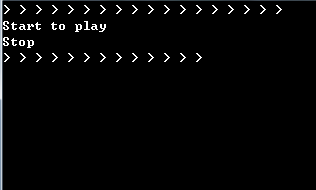对Python3+gdal 读取tiff格式数据的实例讲解
1、遇到的问题:numpy版本
im_data = dataset.ReadAsArray(0,0,im_width,im_height)#获取数据 这句报错
升级numpy:pip install -U numpy 但是提示已经是最新版本
解决:卸载numpy 重新安装
2.直接从压缩包中读取tiff图像
参考:http://gdal.org/gdal_virtual_file_systems.html
当前情况是2层压缩: /'/vsitar/C:/Users/summer/Desktop/a_PAN1.tiff'
3.读tiff
def readTif(fileName):
merge_img = 0
driver = gdal.GetDriverByName('GTiff')
driver.Register()
dataset = gdal.Open(fileName)
if dataset == None:
print(fileName+ "掩膜失败,文件无法打开")
return
im_width = dataset.RasterXSize #栅格矩阵的列数
print('im_width:', im_width)
im_height = dataset.RasterYSize #栅格矩阵的行数
print('im_height:', im_height)
im_bands = dataset.RasterCount #波段数
im_geotrans = dataset.GetGeoTransform()#获取仿射矩阵信息
im_proj = dataset.GetProjection()#获取投影信息
if im_bands == 1:
band = dataset.GetRasterBand(1)
im_data = dataset.ReadAsArray(0,0,im_width,im_height) #获取数据
cdata = im_data.astype(np.uint8)
merge_img = cv2.merge([cdata,cdata,cdata])
cv2.imwrite('C:/Users/summer/Desktop/a.jpg', merge_img)
#
elif im_bands == 4:
# # im_data = dataset.ReadAsArray(0,0,im_width,im_height)#获取数据
# # im_blueBand = im_data[0,0:im_width,0:im_height] #获取蓝波段
# # im_greenBand = im_data[1,0:im_width,0:im_height] #获取绿波段
# # im_redBand = im_data[2,0:im_width,0:im_height] #获取红波段
# # # im_nirBand = im_data[3,0:im_width,0:im_height] #获取近红外波段
# # merge_img=cv2.merge([im_redBand,im_greenBand,im_blueBand])
# # zeros = np.zeros([im_height,im_width],dtype = "uint8")
# # data1 = im_redBand.ReadAsArray
# band1=dataset.GetRasterBand(1)
# band2=dataset.GetRasterBand(2)
# band3=dataset.GetRasterBand(3)
# band4=dataset.GetRasterBand(4)
data1=band1.ReadAsArray(0,0,im_width,im_height).astype(np.uint16) #r #获取数据
data2=band2.ReadAsArray(0,0,im_width,im_height).astype(np.uint16) #g #获取数据
data3=band3.ReadAsArray(0,0,im_width,im_height).astype(np.uint16) #b #获取数据
data4=band4.ReadAsArray(0,0,im_width,im_height).astype(np.uint16) #R #获取数据
# print(data1[1][45])
# output1= cv2.convertScaleAbs(data1, alpha=(255.0/65535.0))
# print(output1[1][45])
# output2= cv2.convertScaleAbs(data2, alpha=(255.0/65535.0))
# output3= cv2.convertScaleAbs(data3, alpha=(255.0/65535.0))
merge_img1 = cv2.merge([output3,output2,output1]) #B G R
cv2.imwrite('C:/Users/summer/Desktop/merge_img1.jpg', merge_img1)
4.图像裁剪:
import cv2 import numpy as np import os tiff_file = './try_img/2.tiff' save_folder = './try_img_re/' if not os.path.exists(save_folder): os.makedirs(save_folder) tif_img = cv2.imread(tiff_file) width, height, channel = tif_img.shape # print height, width, channel : 6908 7300 3 threshold = 1000 overlap = 100 step = threshold - overlap x_num = width/step + 1 y_num = height/step + 1 print x_num, y_num N = 0 yj = 0 for xi in range(x_num): for yj in range(y_num): # print xi if yj <= y_num: print yj x = step*xi y = step*yj wi = min(width,x+threshold) hi = min(height,y+threshold) # print wi , hi if wi-x < 1000 and hi-y < 1000: im_block = tif_img[wi-1000:wi, hi-1000:hi] elif wi-x > 1000 and hi-y < 1000: im_block = tif_img[x:wi, hi-1000:hi] elif wi-x < 1000 and hi-y > 1000: im_block = tif_img[wi-1000:wi, y:hi] else: im_block = tif_img[x:wi,y:hi] cv2.imwrite(save_folder + 'try' + str(N) + '.jpg', im_block) N += 1
以上这篇对Python3+gdal 读取tiff格式数据的实例讲解就是小编分享给大家的全部内容了,希望能给大家一个参考,也希望大家多多支持【听图阁-专注于Python设计】。


